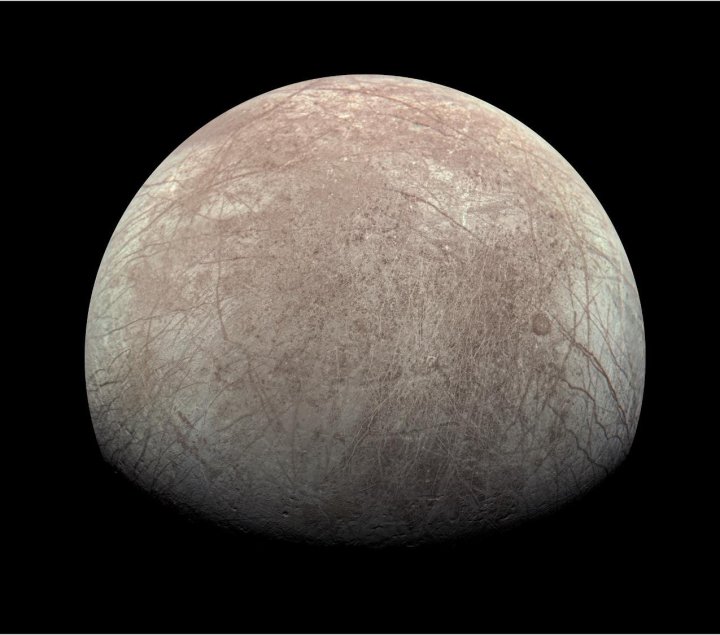When scientists look out into the solar system for places other than Earth that might be capable of hosting life, one of the leading locations of interest is Jupiter’s moon Europa. Even though it is far from the sun and it appears on the surface to be icy and inhospitable, it has a liquid water ocean located beneath a thick icy crust, which could potentially allow for life to survive there. However, new research pours some cold water on this possibility, as it seems that the moon produces less oxygen than previously thought.
Researchers used data from the Juno mission to Jupiter, which has also performed flybys of Europa, to see how much hydrogen was being released from the moon’s surface. Measured using Juno’s Jovian Auroral Distributions Experiment (JADE) instrument, this data can be used to estimate how much oxygen is being produced — and it’s thought to be just 26 pounds every second, compared to previous estimates of up to 2,000 pounds per second.

“Back when NASA’S Galileo mission flew by Europa, it opened our eyes to the complex and dynamic interaction Europa has with its environment. Juno brought a new capability to directly measure the composition of charged particles shed from Europa’s atmosphere, and we couldn’t wait to further peek behind the curtain of this exciting water world,” said JADE scientist Jamey Szalay of Princeton University in a statement. “But what we didn’t realize is that Juno’s observations would give us such a tight constraint on the amount of oxygen produced in Europa’s icy surface.”
Europa is affected by its environment particularly in terms of the powerful magnetic field of Jupiter, with radiation belts around the planet that bombard the moon with charged particles. These particles hit the ice on Europa’s surface and split it into hydrogen and oxygen, eating away the icy crust over time. This is how scientists are able to estimate the amount of oxygen produced by measuring the hydrogen.
“Our ability to fly close to the Galilean satellites during our extended mission allowed us to start tackling a breadth of science, including some unique opportunities to contribute to the investigation of Europa’s habitability,” said Juno’s principal investigator, Scott Bolton of the Southwest Research Institute. “And we’re not done yet. More moon flybys and the first exploration of Jupiter’s close ring and polar atmosphere are yet to come.”
The research is published in the journal Nature Astronomy.



